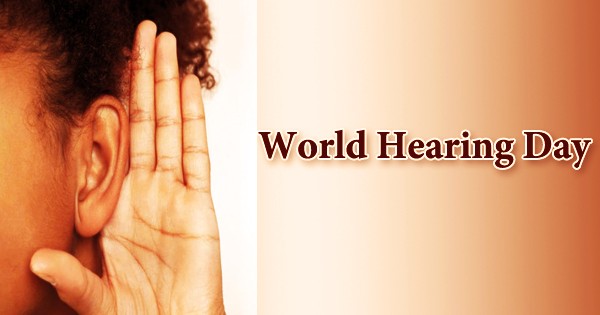Every year on March 3rd, World Hearing Day is observed to raise awareness of how to prevent deafness and hearing loss, as well as to encourage ear and hearing treatment around the world. It is an annual initiative organized by the World Health Organization’s (WHO) Office for the Prevention of Blindness and Deafness. WHO selects a theme each year and creates evidence-based advocacy resources such as brochures, leaflets, posters, banners, infographics, and presentations. World Hearing Day and its theme are proudly supported and promoted by the International Communication Project (ICP). The campaign’s goals are to disseminate awareness and encourage people to take steps to avoid hearing loss and improve hearing treatment. The first event took place in 2007, and it was previously known as International Ear Care Day. WHO hosts an international World Hearing Day celebration at its Geneva headquarters. In recent years, a growing number of the Member States and other partner organizations have participated in World Hearing Day by organizing a variety of activities and events in their respective countries. WHO invites all interested parties to participate in this global initiative. The World Health Organization’s choice of the theme reflects the main message that timely and successful treatments will help people with hearing loss reach their full potential. It recognizes that contact and good hearing health bind us to each other, our families, and the environment at all stages of life. It emphasizes the importance of timely and effective interventions in facilitating access to education, jobs, and communication. As part of its work toward universal health coverage, WHO seeks to provide evidence-based guidelines to guide efforts for the introduction of quality Environmental Health Criteria programs into national health plans of Member States. The World Health Organization’s “World Report on Hearing (WRH)” was created in response to the World Health Assembly resolution (WHA70.13), which was passed in 2017 with the aim of assisting the Member States in incorporating ear and hearing services into their national health plans. The WRH was created in partnership with ear and hearing care experts and stakeholders who helped shape the report’s strategic direction and ensured that it reflected a variety of cultural backgrounds and approaches to hearing care.
Hearing is an essential brain function, and when the brain is deprived of sound as a result of hearing loss, it loses the capacity to interpret sound. And in those with only moderate hearing loss, parts of the brain begin to shrink or atrophy over time. The World Health Organization (WHO) selects a theme for “World Hearing Day” each year and creates advocacy materials such as brochures, pamphlets, posters, infographics, and presentations to promote it. Unfortunately, ear and hearing treatment is inadequate around the world, and the WHO recommends that ear and hearing care be included in all public health systems. It doesn’t have to be difficult to communicate with someone who has a hearing disability. Here are a few pointers on how to communicate more effectively with someone who has a hearing disability:
- To begin, get their attention. Face the individual directly and, if at all necessary, maintain eye contact. It can be difficult to grasp a message if you miss the beginning.
- Speak clearly; there is no need to shout.
- Maintain a safe distance between your hands and your ears. Enable the listener to get a full view of your face.
- Reduce the amount of background noise (e.g., by turning off the radio or television). Listening in relatively quiet environments is recommended because it allows for the best voice reception and allows the listener to use any visual cues that might be needed to aid speech comprehension.
- Make sure light is not shining in the listener’s eyes.
- If you’re not making yourself understood, find a different way of saying the same thing.
- Be mindful that, even with a hearing aid, the listener can have trouble understanding audio. Some people with hearing loss have a harder time observing a conversation than others.
It’s a two-way street when it comes to communication. Clear communication is the responsibility of both the listener and the speaker. According to the World Health Organization, an estimated 430 million people worldwide suffer from mild or serious hearing loss (WHO). By 2050, the number could rise to 700 million. Hearing treatment is a public health concern that should be given top priority. Communication is a fundamental human right; however, communication problems and conditions are not accepted as disabilities in many parts of the world. There were 291 events/activities reported from 81 countries, which will be detailed in their annual report. On February 25, 2019, WHO launched hear-WHO, a free smartphone application that allows people to periodically check their hearing and intervene early in the case of hearing loss. The app is aimed at people who are at risk of hearing loss or who are already experiencing any of the symptoms associated with it.
















